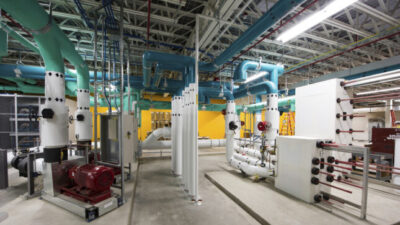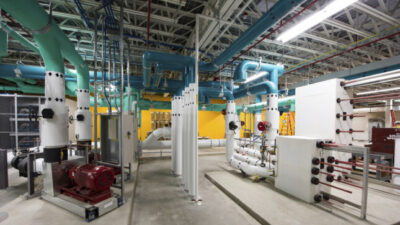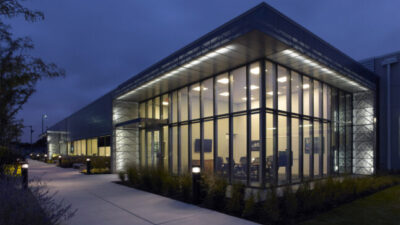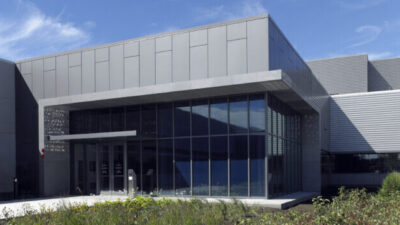Designing efficient and effective data centers and mission critical facilities is a top priority for consulting engineers. Engineers discuss HVAC systems, variable frequency drives, and unique projects.
Participants
- Cyrus Gerami, PE, LEED, CxA, Associate, Senior Project Engineer/Manager, exp Global Inc., Maitland, Fla.
- Kerr Jonstone, IEng, MIET, Senior Electrical Engineer, CH2M Hill, Glasgow, Scotland
- Keith Lane, PE, RCDD/NTS, LC, LEED AP, President, Lane Coburn & Assocs., Bothell, Wash.
- James McEnteggart, PE, Vice President, Primary Integration Solutions Inc., Charlotte, N.C.
- Robert M. Menuet, PE, Senior Principal, GHT Ltd., Arlington, Va.
- Brian Rener, PE LEED AP, Electrical Platform Leader and Quality Assurance Manager, M+W Group, Chicago, IL.
HVAC
CSE: What unique requirements do mission critical facility and data center HVAC systems have that you wouldn’t encounter on other structures?
Rener: High power density, medium voltage distribution systems, need for specialized cooling and air floor containment, low impedance grounding, and multiple tiered generator and UPS systems are some of the requirements. However, we also design semiconductor cleanrooms, so we are used to encountering many of these issues regularly.
Gerami: Enormous power and cooling requirements that must be delivered with reliability, redundancy, and energy efficiency.
Menuet: Challenges include the 24/7 aspect of continuing operation; concurrent maintenance; fault tolerance; equipment redundancy; chemical treatment of large redundant piping systems; computer room air quality issues, particularly when using large amounts of outside air; and coordination of HVAC systems with end-user requirements, especially when server requirements are unknown. You have to try to anticipate future needs during design and accommodate a variety of future scenarios. We are also working in a lot of tight spaces, trying to design air delivery system that optimize the space available while delivering adequate cooling and loads. In response, we are using hot and cold aisle containment. The design must be flexible enough to allow users to choose from a variety of equipment but with a rigid enough structure to make sure the HVAC works.
McEnteggart: Mission critical facilities and data centers have a unique requirement for continuous operation during power outages. As data center power densities have climbed into the stratosphere above 150 to 200 W/sq ft, a power outage that shuts down the air handlers even for a minute will result in enough heat to shut down the computers. Today, many mission critical building owners require UPS systems on the air handlers so they can maintain a constant air temperature until the emergency generators start. We haven’t seen this in any other kind of facility.
Johnstone: Selecting a provider with experience in operating a data center is critical as it helps demonstrate they have the experience and knowledge of providing and ensuring high resilience availability, which is the major difference between normal commercial buildings and data centers and mission critical facilities. The increased levels of resilience and tier matrices criteria require larger space requirements and maintenance regimes than would be otherwise be found in a commercial environment.
CSE: What changes in fans, variable frequency drives (VFDs), and other related equipment have you experienced?
Johnstone: Working in an almost industrial application, noise can be a significant concern, but fan types have changed to being more efficient plug fans and fan selection is more influenced by reduced fan maintenance and assessing energy consumption. VFDs help improve the energy performance of the fan and are now seen as a standard requirement on all systems, helping reduce costs dramatically over the last 10 years.
Rener: I’ve seen the use of large fan arrays for air circulation and exhausting, chillers that are more robust and responsive to load fluctuations, and a variety of equipment dedicated to air side economization and increased energy efficiency.
McEnteggart: In my mind, one of the most interesting developments is related to the dramatic decrease in the cost of VFD in recent years. As a result, I’m seeing designs in which VFDs are being used in constant speed applications simply for the soft-start capability due to the low cost of the VFD versus the traditional starter. Many engineers have stopped specifying balancing valves on pumps; instead, they use VFDs to support balancing and flow adjustment of the pumps.
Menuet: There has been an increased application of electronically commutated motors (ECMs). VFD use for fan speed control is also more widely used and applied to traditional forward-curved fans to achieve energy savings through variable speed operation. We are seeing increased application of variable speed control to air delivery systems to reduce consumption.
CSE: Is water-based cooling becoming more prevalent in new facilities? What about outside air (free cooling)?
Gerami: Yes. Both are being used more and more.
Rener: There is a certain heat density where water cooling becomes preferable, if not required. Water or air side economization (free cooling) is becoming more and more a part of most facilities, depending on local climate and the temperature and humidity range the IT equipment will allow. Adiabatic (evaporative) cooling using nothing but ground water has been implemented in several of our projects.
Johnstone: In Europe, the majority of solutions will be derived from air-cooled equipment. The majority of this equipment will be free cooling in nature or additional free cooling circuits will be introduced as part of the cooling circuits. Where water-cooled chillers are introduced, this in normally via a dry cooling heat rejection cycle.
Menuet: Yes, we’re seeing end users build in provisions to their systems for direct water cooling of IT equipment for servers. We are also seeing a drive toward direct evaporative cooling and outside air.
McEnteggart: Adoption of water cooling has been slow, with a notable exception being high-performance computing arrays. Outside air, or free cooling, is becoming commonplace in new designs; however, these systems need more space due to large ductwork requirements. The cost trade-off between the larger space requirements and energy savings should evaluated with an energy model before committing to this approach.
CSE: Describe a recent HVAC challenge you encountered, and how you worked to overcome it.
Johnstone: Providing high-density solutions into co-hosting data halls presents a technical challenge. However, we used CFD modeling techniques to prove our air distribution strategy was efficient, and it also provided vital information on the layout of high-density racks in a failure situation.
Rener: We recently designed the Massachusetts Green High Performance computing facility. There were numerous challenges for this kind of computing facility versus a traditional data center. It had to support both high-performance computing equipment and be flexible to support super computers. The design made use of waterside economizing, elevated chilled water temperatures, and variable speed water-cooled centrifugal chillers for optimum efficiency. Modular in-row coolers were used for server cooling providing for efficient fan operation and airflow. Designs for hot aisle containment minimize air mixing and improve equipment efficiencies. The result is the facility can operate on “free cooling” up to 75% of the year due to elevated chilled water temperatures. The facility had goals of a PUE below 1.5 and LEED certification. We achieved PUEs well below 1.3 and LEED Gold certification.
Gerami: Every project has its own challenges that are unique. In one recent project in Colorado, use of an air-side economizer and evaporative cooling at a high-altitude site proved to be challenging.
Menuet: A recent challenge involved implementing a thermal energy storage tank requirement in a limited space. We were attempting to achieve thermal stratification in a chilled water storage tank for continuous cooling in very limited space. By designing and using CFD modeling of inlet diffusers, we were able to achieve the desired outcome and demonstrate that true thermal stratification was not necessary to achieve the run-throughs the client was looking for.



